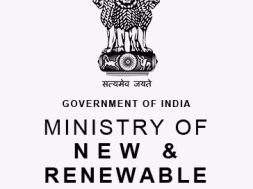
Lakshadweep Charts a Greener Future with India’s First Island-Wide Decarbonisation Drive – EQ
In Short : India’s Central Electricity Authority is crafting a decarbonisation roadmap for Lakshadweep, aiming to replace diesel power with renewables. Plans include solar, wind, battery storage, and undersea grid connections. Honeywell has commissioned India’s first on-grid solar-plus-BESS project on Kavaratti island, slashing diesel use and emissions. This initiative supports India’s net-zero goal and sustainable island development.
In Detail : The Central Electricity Authority (CEA) is developing a strategic roadmap to decarbonise the Lakshadweep islands. Currently reliant on diesel generators for electricity, the islands are set to transition to a cleaner, more sustainable energy model. This shift aligns with India’s broader efforts to reduce carbon emissions and promote renewable energy in remote and ecologically sensitive regions.
As part of the plan, the CEA is assessing options for inter-island grid connectivity and evaluating the feasibility of linking Lakshadweep to the mainland power grid via undersea cables. This would ensure stable power supply while enabling the integration of renewable energy sources such as solar and wind. Battery energy storage systems (BESS) are also being considered to manage energy intermittency and improve grid reliability.
In a major milestone, Honeywell Automation India commissioned the country’s first on-grid solar project using BESS on Kavaratti island. This system includes a 1.7 MWp solar plant and a 1.4 MWh battery storage system. The project, developed for the Solar Energy Corporation of India (SECI), is expected to cut diesel use by nearly 20 million litres and reduce carbon emissions by over 58,000 tonnes over its lifetime.
This initiative is not just environmentally significant but also economically beneficial. The solar-plus-storage project on Kavaratti is projected to save approximately ₹2,500 million across its operational lifespan. It demonstrates the potential of combining renewable energy with advanced storage solutions in areas with limited access to traditional power infrastructure.
The Lakshadweep Administration has been active in scaling up renewable energy deployment across the islands. Efforts include expanding solar installations, introducing wind generators to harness monsoon winds, and reviving biomass gasifier plants. These projects aim to fully phase out diesel generators, especially for daytime electricity needs.
These developments reinforce India’s commitment to achieving net-zero emissions by 2070. By turning Lakshadweep into a model of clean energy transition, the government hopes to set an example for similar island territories and remote regions across the country.














